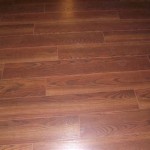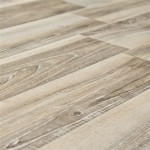Essential Aspects of Raised Flooring Systems
Raised flooring systems, often referred to as access floors or modular flooring, have become increasingly popular in commercial and industrial settings. They offer numerous advantages, including improved accessibility, flexibility, and environmental benefits.
Construction and Components
A raised flooring system consists of a substructure and a raised surface. The substructure, typically made of steel or aluminum, provides support and elevation for the raised surface. The raised surface is constructed from interlocking panels, most commonly made of steel, wood, or gypsum. These panels are modular and can be easily removed or replaced for maintenance or reconfiguration.
Benefits and Advantages
Raised flooring systems offer a wide range of benefits, including:
- Improved accessibility: The void space created beneath the raised surface provides easy access to under-floor utilities, cables, and equipment for maintenance or upgrades.
- Flexibility: Raised flooring systems are highly flexible and can be easily reconfigured to accommodate changing space requirements or equipment additions/removals.
- Environmental benefits: The void space allows for efficient airflow, which can improve heating and cooling efficiency and reduce energy consumption.
- Noise reduction: Raised flooring systems can help reduce noise transmission between floors, creating a quieter working environment.
- Increased usable space: The raised surface effectively increases the usable space within a room, as the void space can be utilized for storage or equipment placement.
Applications and Industries
Raised flooring systems are commonly used in a variety of applications, including:
- Data centers and server rooms
- Call centers and office spaces
- Hospitals and healthcare facilities
- Laboratories and research institutes
- Cleanrooms and controlled environments
Factors to Consider
When considering a raised flooring system, several factors should be taken into account:
- Load capacity: The system's ability to support the weight of equipment, furniture, and people
- Fire rating: The system's ability to resist fire and prevent the spread of flames
- Anti-static properties: The system's ability to minimize static electricity buildup
- Durability and maintenance: The system's ability to withstand heavy use and ease of maintenance
- Cost and ROI: The initial investment and ongoing maintenance costs should be considered against the long-term benefits
Conclusion
Raised flooring systems offer a range of benefits and advantages, making them an ideal solution for various commercial and industrial applications. Their flexibility, accessibility, and environmental benefits contribute to enhanced efficiency, productivity, and overall space optimization.

Raised Access Floor Systems Floors Panels Installation Computer Room Flooring Comxusa

Raised Access Flooring A Guide

Search Result Avayo Electronics Raised Floor System

What Is Raised Floor System Its Advantages And S The Constructor

Raised Access Floor Taf Floors Ceilings

Office Systems The Advantages Of Raised Access Flooring

Raised Floor System Panels Access Computer Replacement Tiles

Raised Floor Specifications Huiya Access System Performance

Data Centre Computer Room Raised Access Floor System

Raised Access Flooring Archtoolbox
Related Posts








